The picture below is of my beautiful dog, Cody. He suffered from pressure sores when he got to be an old boy. If you live with a senior dog or a canine with mobility problems, it’s important to know how to recognize the signs of pressure sores and hygromas in dogs. They are common skin injuries that can turn into big health problems if treatment isn’t started quickly.
Table of Contents[Hide][Show]
![Cody-pressure-sore[1]](https://dogwheelchairlife.com/wp-content/uploads/2020/12/Cody-pressure-sore1.jpg)
The reason old and disabled dogs are prone to pressure sores (decubital ulcers) and their counterpart, hygromas, is simple. Elderly pets have less muscle mass than younger dogs. They also lie around in one position, for longer periods of time. The combination can set the stage for serious consequences.
Note: This post contains affiliate links.

Ask & Discover
Get personalized content recommendations and answers drawn from our website. Simply type your question or topic of interest, and our AI assistant will help you find relevant articles, tips, and insights. You can also have a natural conversation to explore topics in more depth.
What is a pressure sore (decubitus ulcer or bed sore)?
A pressure sore is a chronic injury to the skin. It happens when a dog lies on a hard surface for an extended period of time without changing positions. The weight from lying in one spot decreases blood flow to the area, damaging the skin and tissue. The skin breaks down and develops an open wound.
At first, these wounds start on the surface of the skin, but if they aren’t treated fast, they can grow deep into the bone, causing a lot of pain to your dog.
Pressure sores typically develop over bony areas on a dog’s body like the elbows, feet, armpits, hips and hocks (lower joint of the leg).
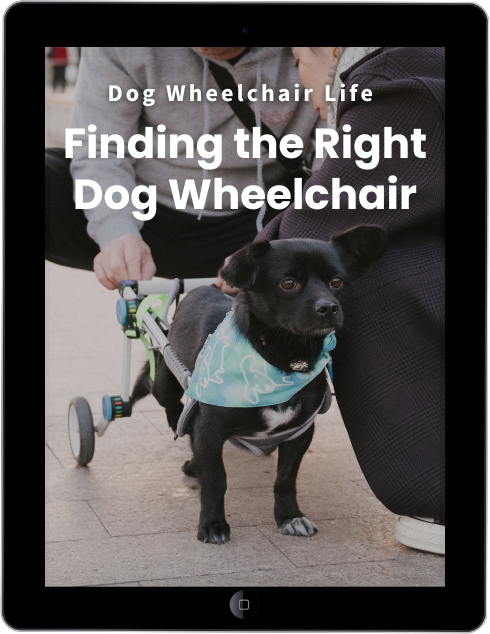
eBook
Find The Right Dog Wheelchair For Your Pet
Your dog has a mobility problem, and you want to buy a wheelchair. But do you know what kind of cart will work best for your dog’s individual needs? After a decade of teaching pet owners how to make the right choice, I put the information into an eBook!
Paralyzed dogs are prone to the problem for several reasons:
Dogs who use wheelchairs have an added risk
Pets who use a wheelchair run the risk of developing sores at the points where the cart rubs against their skin. This can happen because the wheelchair doesn’t fit properly or from long-term wear and tear of the cart. It also occurs when a dog continually soils himself in the wheelchair and when a pet spends too much time in a cart.
Prevention of pressure sores in dogs
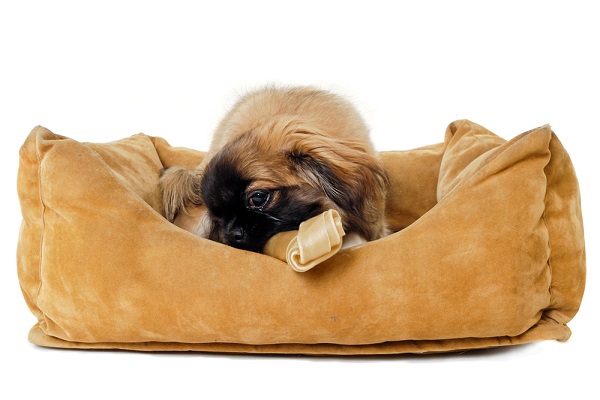
The best method to prevent a pressure sore from developing is to make sure your pet doesn’t lie in one spot too long. It also helps to keep your dog off hard surfaces, like the floor, as much as possible.
Another technique is to wrap susceptible bony areas with gauze or elastic bandages. Pet owners can also use a baby onesie to cover the area. Baby onesies are a great option for small dogs because they come in cute designs and are very affordable. A similar option for larger dogs are pet recovery suits and other types of doggie clothing.
If your dog’s pressure sore is due to his wheelchair, try adding soft foam padding over the offending part of the cart. Cozy lamb seatbelt covers for your car can be repurposed inside the saddle and leg holes to soften the area.
A favorite solution I discovered was the use of compression sleeves for dogs. They fit over a dog’s front and hind legs.
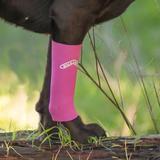
Symptoms of pressure sores and hygromas in dogs
Here are the early symptoms to watch out for:
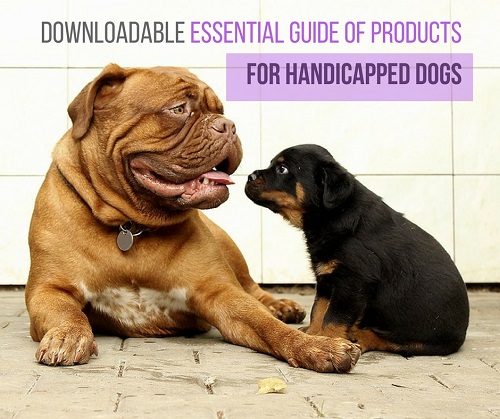
Get the Essential Guide
The Essential Guide of Products for Handicapped Dogs e-book is a labor of love for me. I wrote it to answer your most pressing questions about where to find the best products for your wheelchair dog. You’ll find products you didn’t know existed and each will improve your dog’s quality of life. Print a copy and keep it by your side.
Advanced warning signs that call for veterinary care:
How pressure sores are treated
Take pressure off the wound. – An orthopedic dog bed, a pillow or even an inflatable donut for people, works well to reduce pressure points. Then make sure you help your dog turn over or change positions, every couple of hours.
See your veterinarian. – Your vet will determine whether the skin ulcer has an underlying infection. If this is the case, dogs are treated with antibiotics, topical antiseptics and dressings.
Deep wounds may need surgery. – Ulcers that go deep into the skin or bone might require your vet to debride the skin. That’s when dead or diseased tissue is surgically removed so healthy tissue can grow.
Be patient. – It takes 2-4 weeks before the skin begins to heal. You’ll know you’re on the right track with the size of the wound gets smaller. New healthy tissue grows at the edges and slowly closes the wound.
Do not let your dog stay in one position for more than 2-3 hours.
What is a hygroma?

Hygromas are nearly the opposite of pressure sores. They begin in the same way as a decubitus ulcer, but instead of the skin breaking down, the tissues around bony areas swell and fill with fluid.
The swelling of a hygroma isn’t painful and if it’s caught early your vet can treat it by aspirating the area with a needle and releasing the fluid.
Some hygromas are more serious and can become infected. They require more advanced drainage techniques or surgery. When a hygroma grows very large or becomes infected drainage tubes are inserted into the area to decrease the fluid buildup.
Other hygromas develop an abscess or sore on top. These require surgery to remove the bad skin and grafts to reconstruct the area with healthy skin. Untreated hygromas can be life-threatening.
The best ways to prevent hygromas
These suggestions are similar to the prevention techniques of pressure sores, but they’re worth noting again.
Change your dog’s position often – Help them turn to a new position every 2-3 hours.
Invest in an Orthopedic dog bed – Many manufacturers sell dog beds made of Egg-crate and foam mattresses make a big difference.
Do range of motion exercises – Basic physical therapy exercises will keep your paralyzed dog’s joints and muscles flexible and strong. Talk to your veterinarian about the proper way to perform daily range of motion techniques.
Massage therapy – Learn how to use massage techniques for your paralyzed dog’s hips and limbs. It is a good way to keep blood flowing to the muscles and surrounding tissue.
Want to learn how to do range of motion exercises with your dog: Read our article – 9 Dog Physical Therapy Exercises You Can Do At Home.
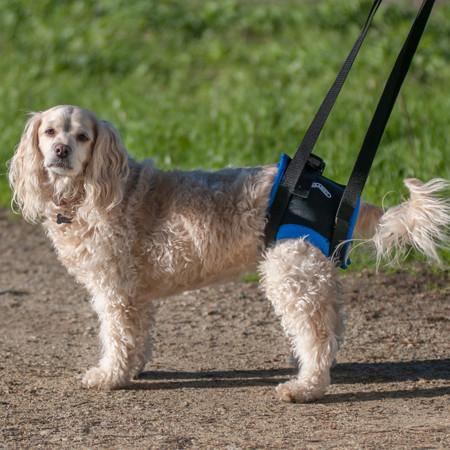
My favorite harnesses for disabled dogs.
Cody’s abscess complication
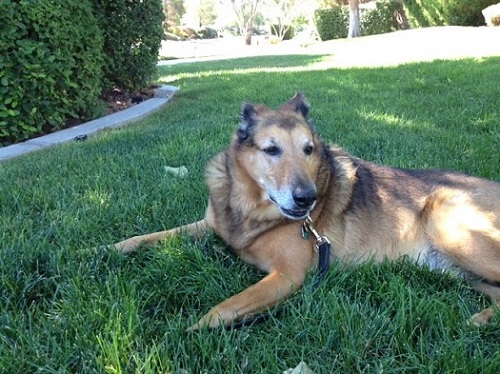
Cody suffered from Inflammatory Bowel Disease when he became an old dog. His problems with digestion led to weight and muscle loss. The skin on his hip began to breakdown and I was treating it with our vet so that it didn’t turn into a pressure sore.
Then one day I noticed an area on his hip was swelling. It was unusual because if felt hard to the touch, rather than soft like a hygroma.
Our vet tried to drain it, but the fluid didn’t empty from the wound. It caused her to think he might have a mast cell tumor. She did a blood test and sent us home to wait for the results.
During the evening Cody became more and more restless and uncomfortable. It turned out the hard mass was an abscess brewing inside the pressure sore. It burst and Cody had to be hospitalized.
An abscess is a fibrous capsule that develops under the skin and can be located near a pressure sore. It’s painful and can cause a serious infection. If bacteria from the abscess travels into the bloodstream, it can cause a high fever and even death.
Most dogs with a skin ulcer don’t develop this complication, but as a pet owner, it’s something you should know… just in case.
Cody recovered from the abscess and was sent home from the veterinary hospital two days later.
Want to learn more about taking care of senior or disabled dogs? Check out our other articles!

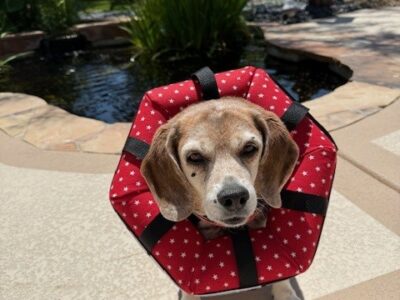

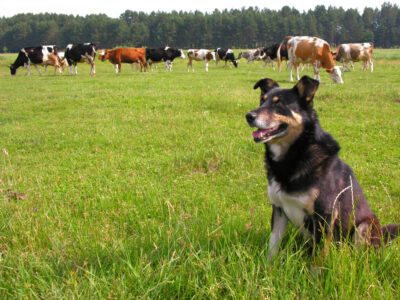


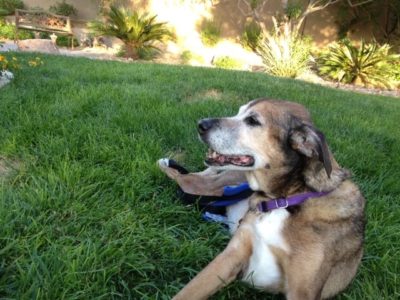

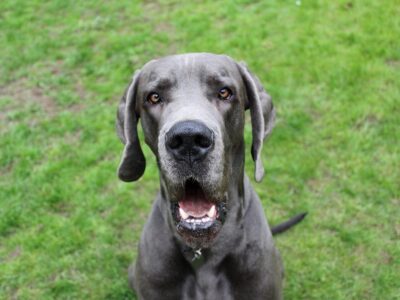
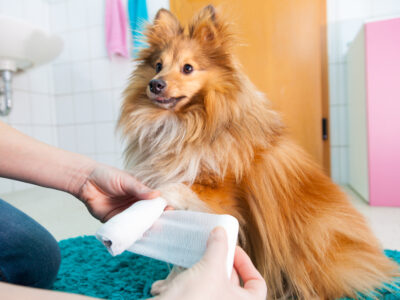
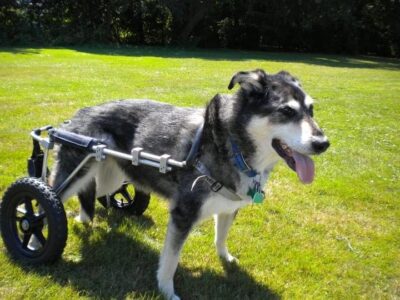
My German Shepherd has a pressure sore smaller than a cantaloupe but bigger then lemon he’s been treated with the vet but it seems to get bigger I need help
Hi Maryann, I’m sorry your dog is going through this problem. Since I don’t know what kind of treatment your vet has recommended, I suggest starting with the basics, like making sure your pup isn’t lying on the pressure sore and that he turns the position of his body often. Changing positions often allows blood to flow to the area so he can heal. Also starting him with light massage can improve the blood flow. An an orthopedic bed will help further by evenly distributing his weight so pressure doesn’t mount in one area. It might also be helpful to discuss the situation with your vet or get a second opinion. – Sharon
We have a mastiff which takes more than 4 people to lift. His back end is paralysed and he is incontinent. He is fine within himself apart from uncomfortable with his trapped wind however he has a large and infected bedsore on his hip. Can you offer some advice please? If we take him to vet they will suggest putting him down. He is on antibiotics but is there anything else we can do for him? Thanks
Lauren, I’m sorry to hear about your dog. My recommendation is to implement the suggestions in my article like: turning your dog over often to relieve the pressure of lying on one side too long. I know you said it’s difficult to lift him, but you can use rear support harness or a big towel as a sling to help lift him. Taking the pressure off the sore can work wonders. Also be sure he’s lying on an orthopedic dog bed. They are designed to distribute pressure evenly throughout his body.
Best wishes, Sharon